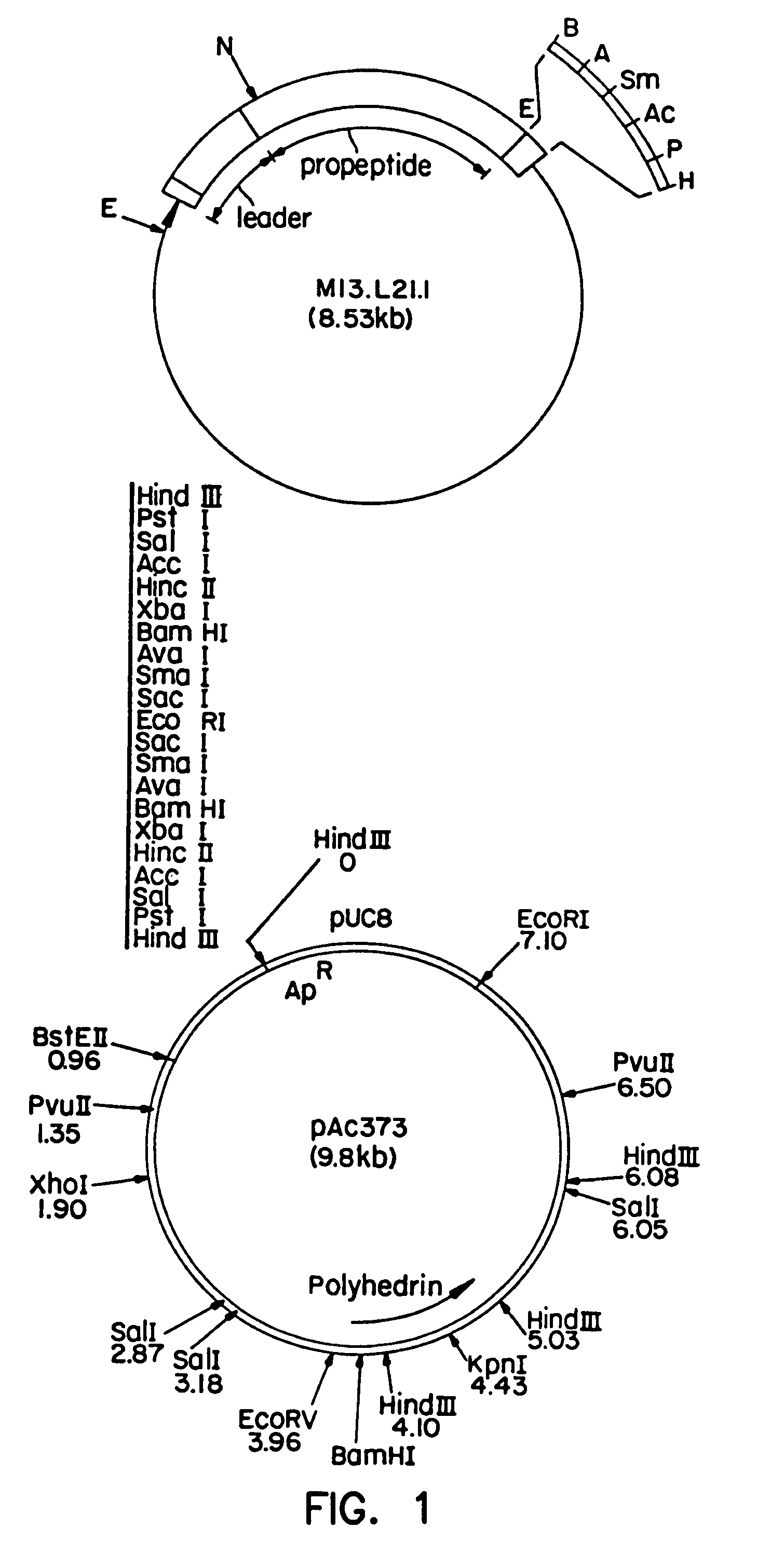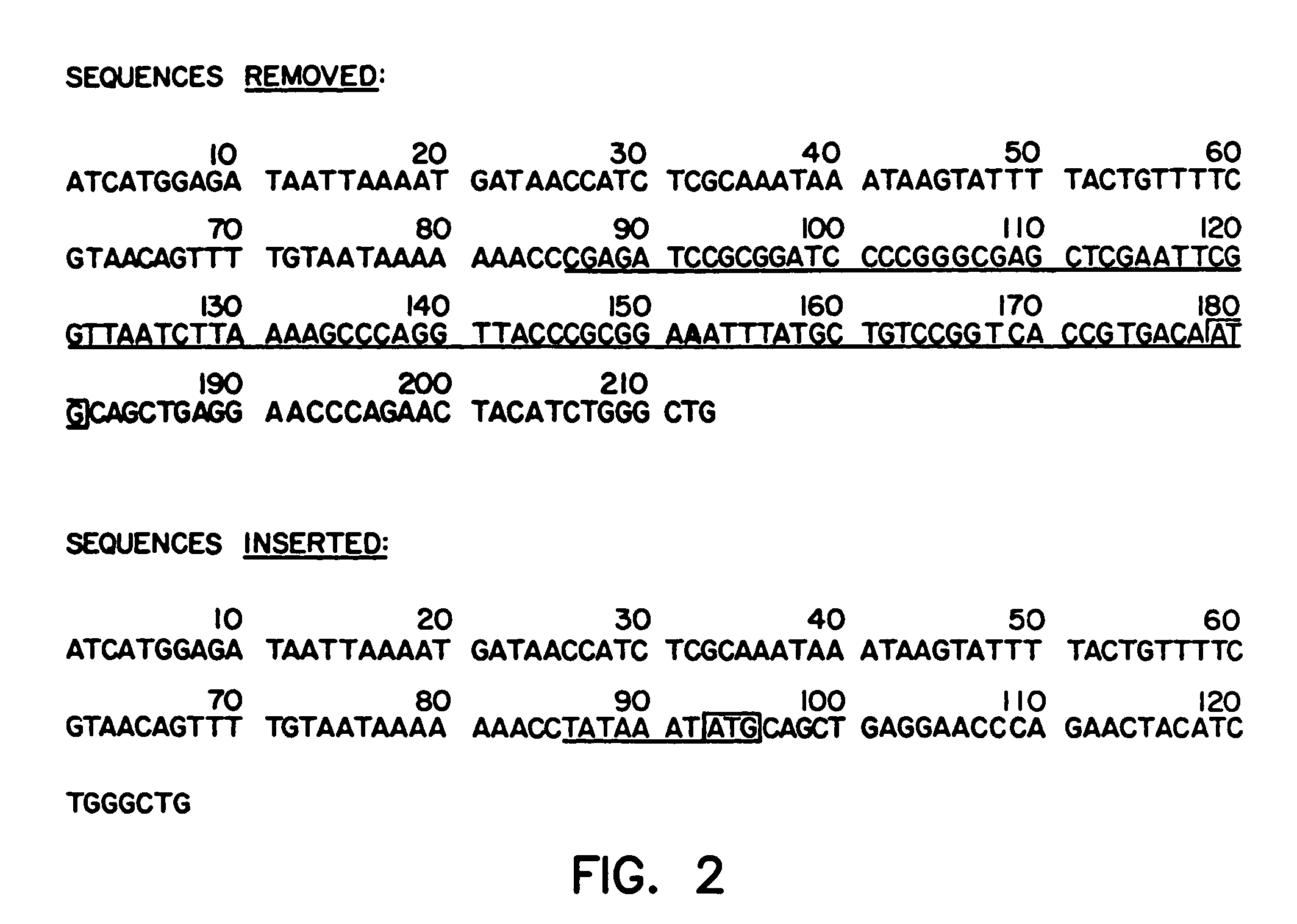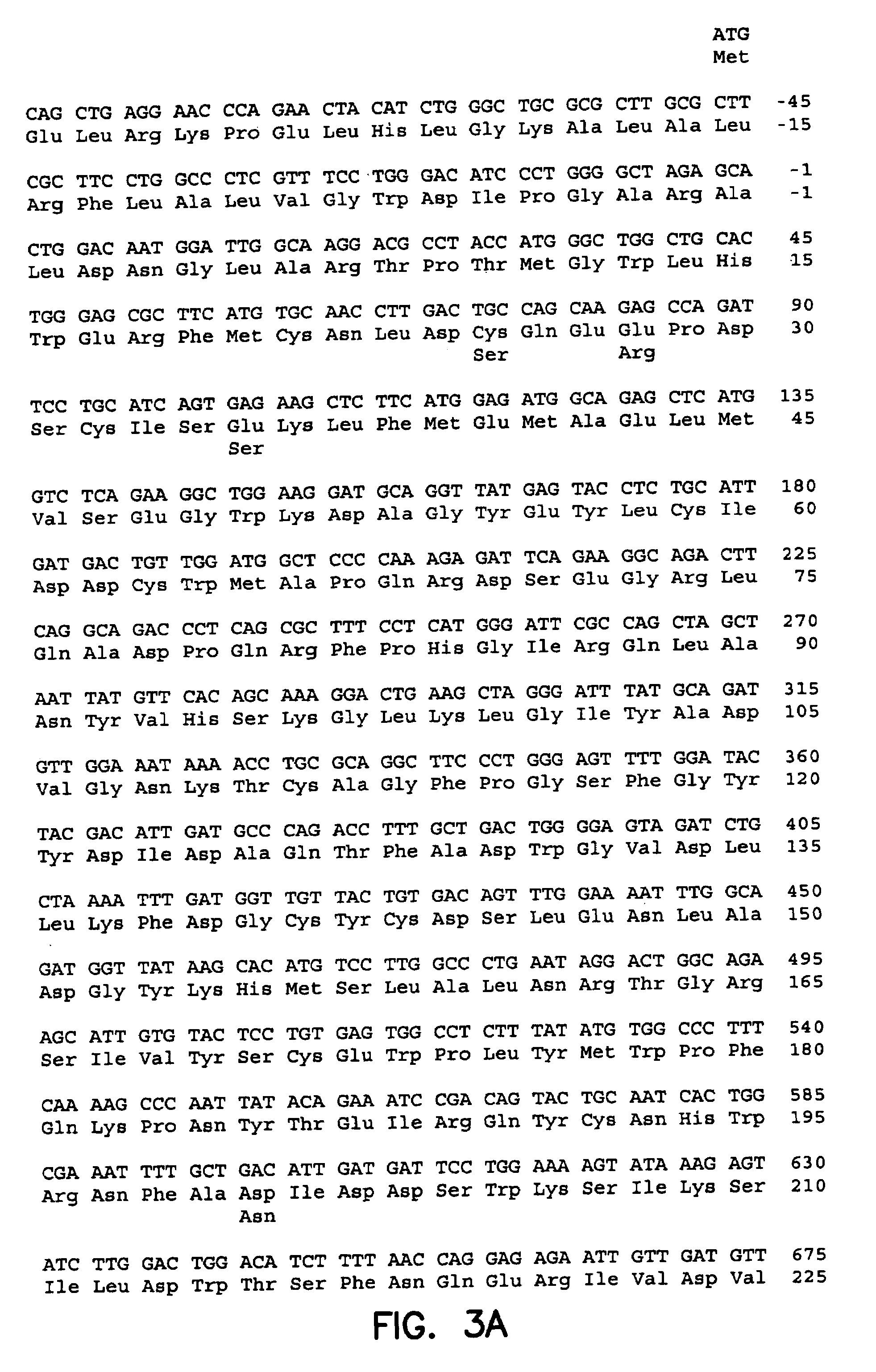Recombinant alpha-galactosidase A therapy for Fabry disease
a technology of fabry disease and recombinant alpha-galactosidase, which is applied in the direction of dsdna viruses, peptide/protein ingredients, genetic material ingredients, etc., can solve the problems of insufficient quantities and early demise of fabry disease for further study
- Summary
- Abstract
- Description
- Claims
- Application Information
AI Technical Summary
Benefits of technology
Problems solved by technology
Method used
Image
Examples
example 1
Construction of a Baculovirus Derivative to Express Human α-Galactosidase A
[0050]The clone that contains the complete coding region for the precursor form of human α-galactosidase A, M13.L21.1 (Hanztopoulos) was digested with EcoRI. All restriction enzyme digestions were performed according to manufacturers instructions, New England Biolabs. This EcoRI digestion was ethanol precipitated and mixed with EcoRI-digested pSPR1 in ligation buffer. After ligation with T4 DNA ligase as recommended by the manufacturer (New England Biolab), recombinants were selected for ampicillin resistance and restriction mapped to identify a pSPR1 recombinant with the EcoRI fragment having the human α-galactosidase A coding sequence. The pSPR1 derivative was then digested with BamHI and mixed with BamHI-digested pAc373, the baculovirus transfer vector which has a unique Bam HI site 8 bp upstream from the ATG codon of the polyhedrin gene coding region. After ligation, recombinants were selected for ampicil...
example 2
Expression of Human α-Galactosidase A by Recombinant Baculovirus Vectors
[0053]To test for α-galactosidase A production, the recombinant viruses were used to infect Sf9 cells. Cells were cultured and infections carried out as described in Summers et al. Exponential phase infected cells were harvested, separated from the culture medium, and both the cells and the culture medium tested for α-galactosidase A activity. The wild type virus, AcMNPV and mock infected cells were included as controls. The activity of α-galactosidase A was measured using the fluorescent substrate, 4-methylumbelliferyl-α-D-galactopyrassoside and is expressed as units (nanomoles per hour at 37° C.) present in the cells or culture medium in a 25 cm2 flask containing 5 ml of medium and approximately 3×106 cells.
[0054]Table 1 indicates that recombinant viruses AcCC1 and AcCC2 express high levels of active recombinant human α-galactosidase A in the culture medium and significant levels in the cells. In contrast, the...
example 3
Construction and Expression of Human α-Galactosidase A in a Modified, Baculovirus Vector
[0056]Transfer vector pCC4, containing the human α-galactosidase A cDNA cloned in proper orientation to the modified polyhedron promoter derived from pAc373, was digested with EcoRV and BssHII (enzymes and used as recommended by the manufacturer, New England Biolabs). The 213 bp EcoRV / BssHII fragment was discarded. To construct the wild type polyhedrin promoter, 4 overlapping oligonucleotides were synthesized, annealed together and mixed with the large fragment of EcoRV / BssHII-cut pCC4 DNA in ligation buffer. After ligation with T4 DNA ligase recombinants were transformed into E. coli and selected on ampicillin plates. Recombinants with the wild type polyhedrin promoter were identified by their inability to hybridize (Sambrook et al., 1989, Molecular Cloning, a Laboratory Manual 2 pp. 8.1-15.173) to a 32p labeled oligonucliotide probe derived from the 93 bp region of DNA deleted from pCC4 (FIG. 2...
PUM
| Property | Measurement | Unit |
|---|---|---|
| Weight | aaaaa | aaaaa |
| Dimensionless property | aaaaa | aaaaa |
| Weight | aaaaa | aaaaa |
Abstract
Description
Claims
Application Information
 Login to View More
Login to View More - R&D
- Intellectual Property
- Life Sciences
- Materials
- Tech Scout
- Unparalleled Data Quality
- Higher Quality Content
- 60% Fewer Hallucinations
Browse by: Latest US Patents, China's latest patents, Technical Efficacy Thesaurus, Application Domain, Technology Topic, Popular Technical Reports.
© 2025 PatSnap. All rights reserved.Legal|Privacy policy|Modern Slavery Act Transparency Statement|Sitemap|About US| Contact US: help@patsnap.com



